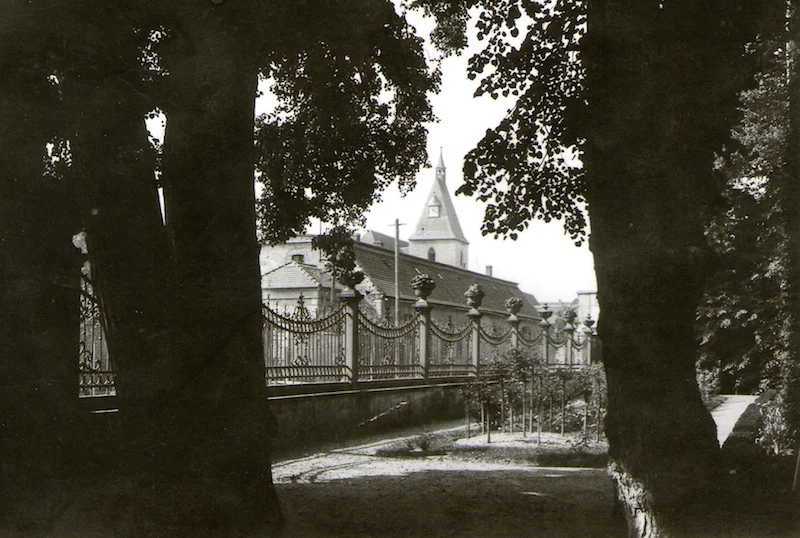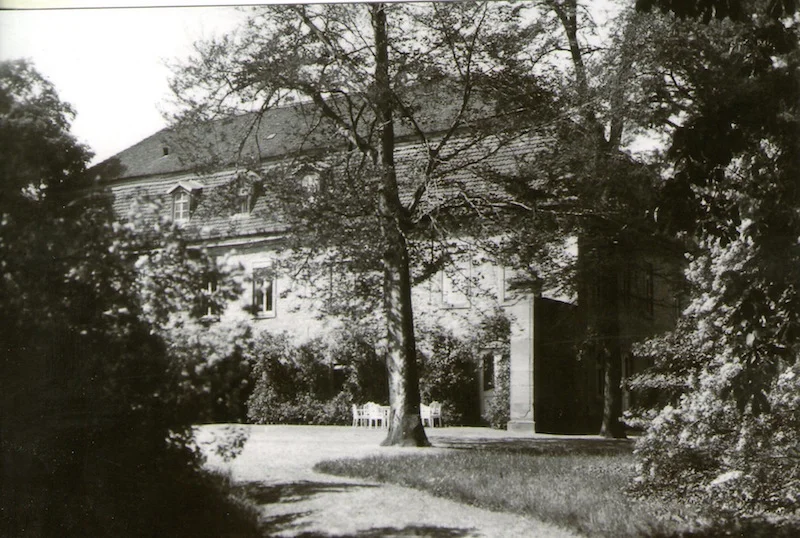


Gleina Castle was built in its current form around 1739, probably according to the plans of the Leipzig engineer Dörffler. The result was a horseshoe-shaped, two-story complex with a mighty mansard roof. The castle is a Baroque palace with Rococo stucco ornaments, vaulted ceilings and a library. It was redesigned by the previous owner Baron von Helldorff in the late 19th century with wood paneling and new ceilings. The ornate stucco ceilings in the Rococo style on the upper floor of the south wing are worth seeing; the library is also located here, with its impressive wooden beam ceiling and paneled walls.
In 1830 the chamberlain Bernhard Heinrich von Helldorf bought the castle from Princess Luise Henriette von Reutz. The castle was primarily used for festivals and hunting trips before Bernhard Heinrich von Helldorf and his wife Luise moved in permanently on June 10, 1893.
On May 19, 1918, Bernhard Heinrich von Helldorf died and the castle was leased to Thyssenwerke Hamborn.
On February 15, 1927, his son, who was also called Bernhard, took over the management of the property. The first floor served as a living area, while the street wing housed the library. The 1st large hall (Red Hall) was the piano room, the 2nd hall (Blue Hall) was the dining room of the rulers, and the 3rd hall (Yellow Hall) was used for celebrations, where the hunting party also ate. We slept in the park wing.
At the end of the Second World War, on April 12, 1945, the Americans came to Gleina and the Helldorfs were expropriated, the manor house was looted and the associated buildings were assigned to various uses.
Since 1947 there have been plans to use the castle as a retirement home. On April 14, 1948 the time had come. Walls were pulled in to create smaller rooms and toilets were installed. The first 40 seniors moved in. In 1954 there were already 52 residents.
A cultural gem was torn apart and destroyed as an ensemble between 1945 and 1989 by demolishing surrounding buildings and dividing it into different forms of ownership. In the course of reunification, this situation was incomprehensibly exacerbated.
In November 1996, the district council took over the castle.
In 2000, a construction company from Plauen acquired the building and wanted to use it as living space. In 2002 there were three variants for a new retirement home. The company went bankrupt before construction began.
On July 24, 2007, the Dutch Hilbert Tjalkens and Vera Teunen bought the building. In Eidhofen they had created a meeting and work center for 24 designers and other artists in a former church and wanted to apply this concept in Gleina too. However, the geographical distance from Holland meant that the project could not be realized. The young couple also didn't have the money for renovations.
In 2013, the Swiss cultural figure and sociologist Felix Schenker bought the castle to launch an experiment. He declared the castle a social sculpture. The castle should be open to cultural workers to develop projects. For this purpose, rooms were renovated and common areas were set up.
In 2014, the first major art biennial took place as well as various smaller cultural events organized by local chronicler Thomas Lampe.
In 2019, a volunteer project manager, Klaus Karwarth, was found who made a significant contribution to the renovation of the castle.
A large painting symposium was planned for 2020, but it could not be held due to corona. In the same year, the castle was the backdrop for the filming of the feature film “The Girl with the Golden Hair” with Corinna Harfouch in the leading role.
The “Gleina Castle - Cultural Summer 22” took place in the summer of 2022. 20 professional artists from Switzerland and Germany lived and worked in the castle. Their works were shown in a follow-up exhibition in the castle and in Lucerne in 2023, in the Vitrine gallery. The project was curated by the Swiss gallery owner Evelyne Walker
>more about the art summer 22
The large-scale CHASO KOSMOS project will follow in 2024
Gleina Castle!
Story
